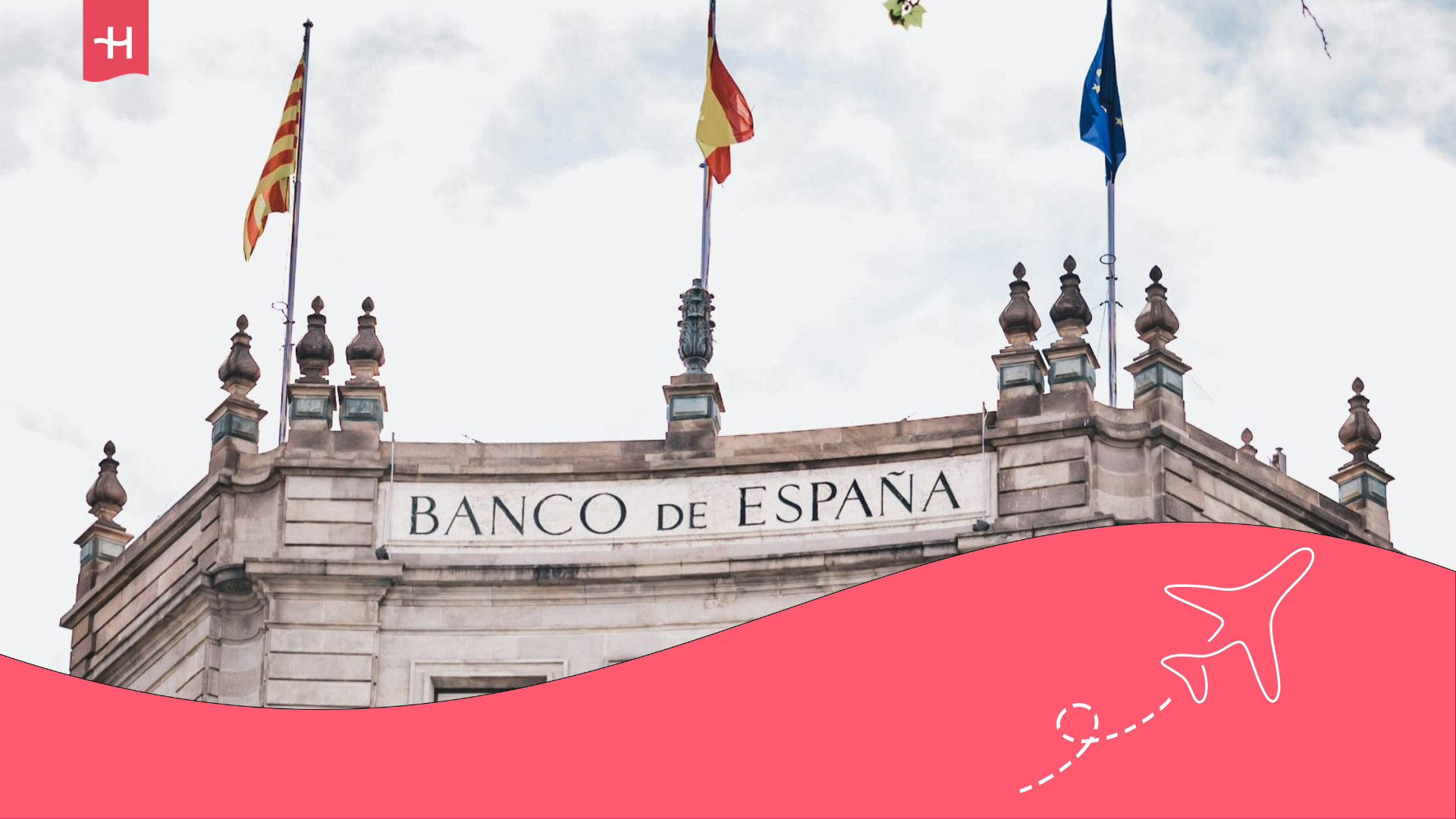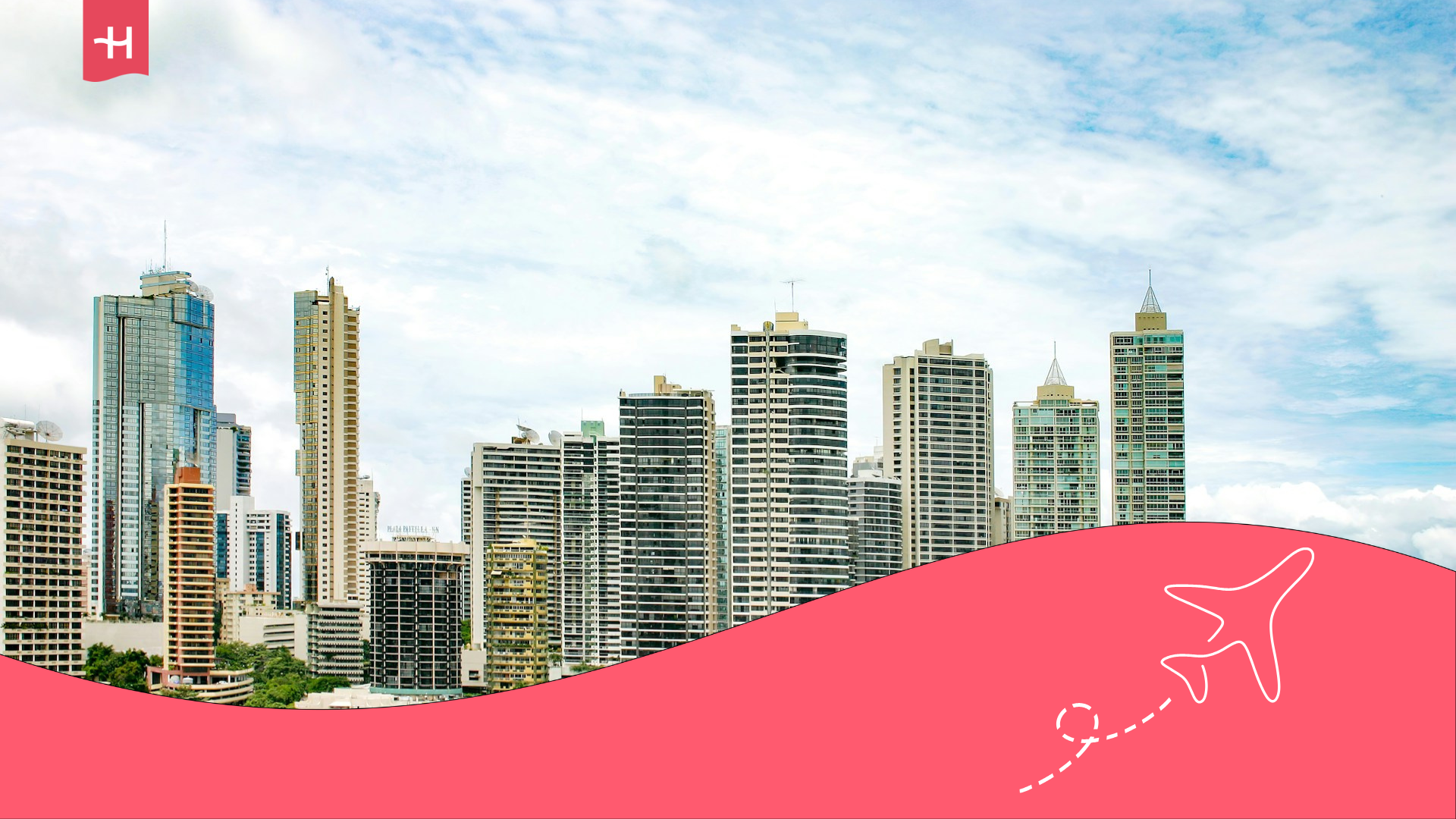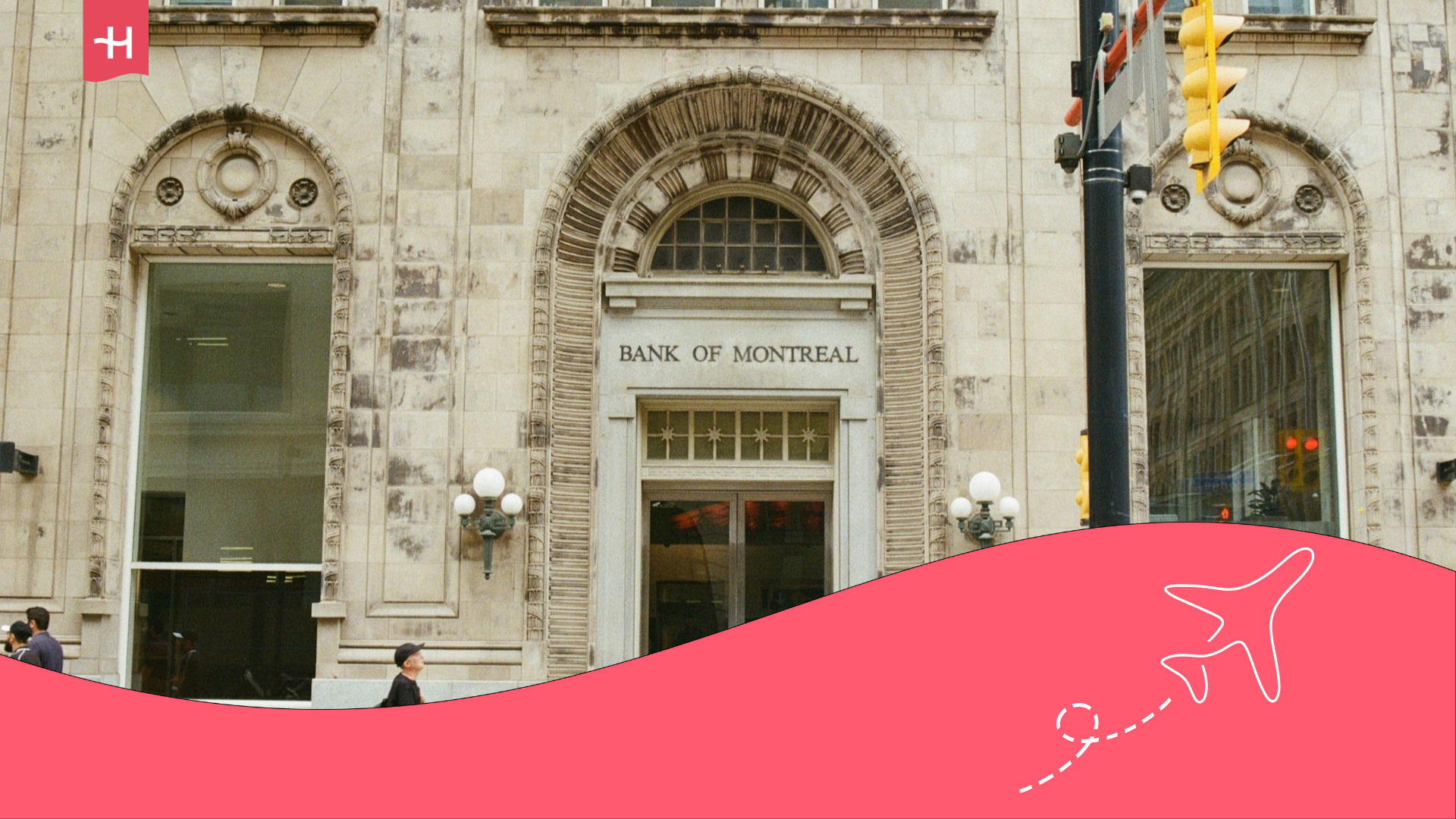Cost of living in Singapore: Food, transport, and more
Knowing the cost of living in Singapore is key to planning your stay in one of the most advanced cities in the world.
Singapore means efficiency, safety, and quality of life. This city-state in Southeast Asia stands out for its modern infrastructure, world-class education system, and open economy. But it’s also famous for being one of the most expensive cities worldwide, raising doubts for those considering moving, studying, or working here. To help, here’s everything you need to know about the cost of living in Singapore.
How expensive is life in Singapore? How much is rent, transport, or simply eating out? In this guide, you’ll find updated prices and a practical look at every aspect of a monthly budget.
Whether you’re planning to stay as a digital nomad, international student, remote worker, or expat, this guide helps you plan expenses and understand daily life in one of the most developed cities worldwide.
What’s the average cost of accommodation in Singapore?
Housing is one of the largest expenses in Singapore’s cost of living. Despite the country’s small size, the property market is dynamic, regulated, and open to both residents and foreigners. Options range from compact studios to modern coliving or family flats, but prices vary significantly depending on location, property type, and whether it’s furnished.
Here are the most common choices for digital nomads, students, or long-term residents, with estimated monthly costs. This helps you choose according to needs and budget.
Studios or small flats
Studios in Singapore are small and functional, usually in private condominiums or flats near MRT stations. If you value privacy, live alone, or move with a partner, they’re a good option. Most include a kitchen, air conditioning, private bathroom, 24/7 security, and access to gym or pool, making it easy to move in without extra concerns.
Areas like Queenstown, Novena, Bukit Merah, or Geylang are more affordable, while Orchard and Marina Bay top the premium list.
- Average monthly price: €1,380–2,116 ($1,500–2,300)
Coliving: Comfort and community in shared spaces
Coliving is increasingly popular in Singapore, especially among expats, digital nomads, and young professionals. These shared spaces offer private rooms (sometimes en suite) and fully equipped common areas: kitchen, coworking, lounge, gym, and laundry. Most include fast WiFi, weekly cleaning, and community events. They’re perfect for meeting people from around the world and networking.
Neighbourhoods like Tiong Bahru, Chinatown, Outram Park, and Jalan Besar have many residences. Leading operators include Hmlet, Cove, and Lyf. Check our guide to the best coliving in Singapore for details.
- Average monthly price: $1,000–1,700 (€920–1,564)
One or two-bedroom flats
If you need more space or move with someone, renting a flat is viable though less affordable. You can rent private condominiums or HDB (Housing and Development Board) flats, which account for 80% of housing and are usually cheaper.
Neighbourhoods with good balance in price and connectivity include Toa Payoh, Woodlands, Hougang, Tampines, and Jurong East.
- Private condominium average monthly price: $2,000–3,200 (€1,840–2,944)
- HDB monthly rent: €1,104–1,840 ($1,200–2,000)
Airbnb for seasonal stays
Though Airbnb rentals under three months are restricted by law, some licensed properties can be booked for at least 90 days. Ideal if you want flexibility without long contracts. Prices include services and most are in central areas with good MRT access.
- Average monthly Airbnb price (3+ months): $2,200–3,500 (€2,024–3,220)
For a longer stay in Singapore, read this article about housing options. To compare costs visually, here’s a table:
| Type of Housing | Monthly price (USD) | Monthly price (€) |
|---|---|---|
| Furnished studio (condo) | $1,500–2,300 | €1,380–2,116 |
| Co-living | $1,000–1,700 | €920–1,564 |
| HDB flat | $1,200–2,000 | €1,104–1,840 |
| Private condo | $2,000–3,200 | €1,840–2,944 |
| Airbnb (3+ months) | $2,200–3,500 | €2,024–3,220 |
Accomodation prices comparison in Singapore
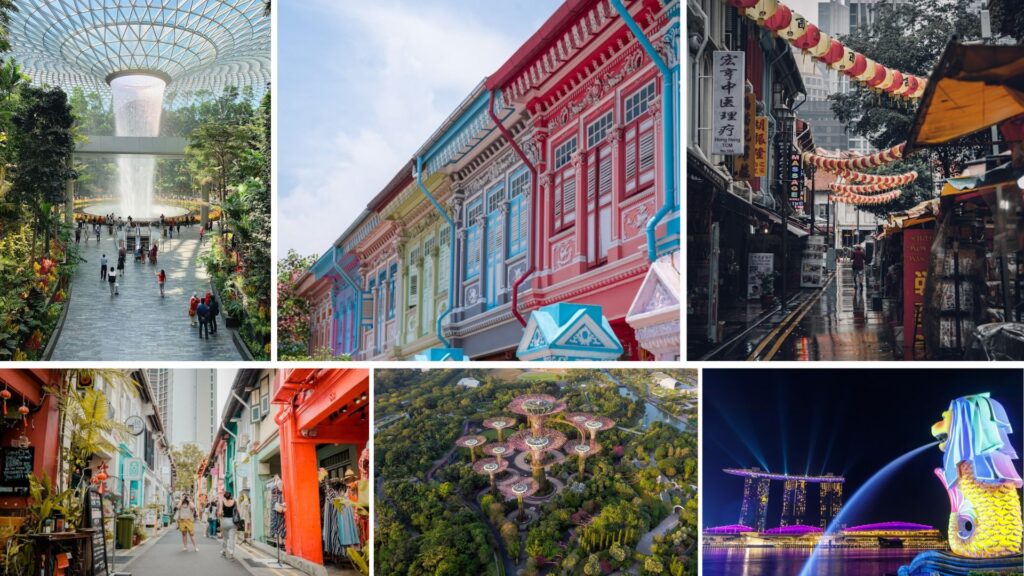
How much do food prices impact Singapore’s cost of living?
Food in Singapore shows an interesting contrast: eating out can be cheap at traditional hawker centres (clean, regulated street food), while supermarket shopping is costly, especially if you buy imports or international brands.
The city-state imports much of its food, making dairy, fruit, beef, and cereals more expensive. Still, you can balance your budget by choosing local or regional products and mixing supermarket shopping with meals outside.
Here are average prices of basic groceries in chains like Cold Storage, NTUC FairPrice, and Giant:
| Product | Price (USD) | Price (€) |
|---|---|---|
| 1 litre of milk | $2.20 | €2.02 |
| Dozen eggs | $3.80 | €3.49 |
| 1 kg jasmine rice | $2.90 | €2.66 |
| 1 kg imported pasta | $4.00 | €3.68 |
| 1 kg chicken breast | $7.00 | €6.44 |
| 1 kg imported beef | $14.00 | €12.88 |
| Sliced bread (500 g) | $2.50 | €2.30 |
| Ground coffee (250 g) | $6.00 | €5.52 |
| 1 chocolate bar | $2.80 | €2.58 |
Food prices in Singapore
A monthly supermarket budget for one person ranges between $250 and 400 (€230–368), depending on diet and habits.
Eating out is part of daily culture. Most locals work long hours and prefer hawker centres with Chinese, Malay, Indian, Thai, and local dishes at very low prices. Meanwhile, gourmet restaurants, brunch spots, and international chains cost more.
| Type of Meal | Price (USD) | Price (€) |
|---|---|---|
| Hawker centre meal | $3.50–5.00 | €3.22–4.60 |
| Local restaurant set menu | $9.00–13.00 | €8.28–11.96 |
| Western restaurant dinner | $18.00–30.00 | €16.56–27.60 |
| Latte in café | $4.00–6.00 | €3.68–5.52 |
Cost of eating out in Singapore
Neighbourhoods like Tiong Bahru, Bugis, Clarke Quay, and Kampong Glam are full of cheap dining spots, while Orchard Road and Marina Bay offer premium experiences.
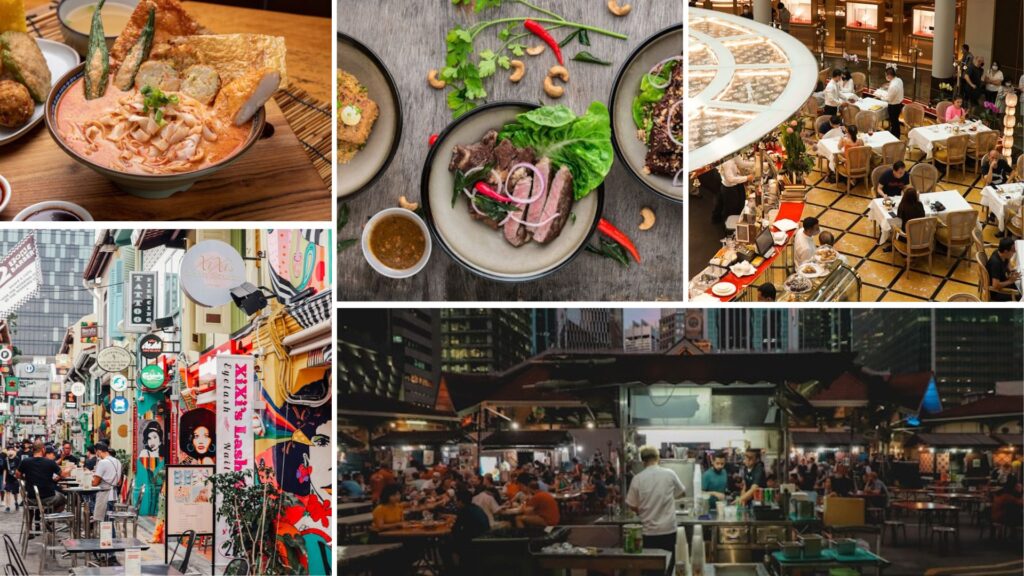
Is transport in Singapore expensive?
Although Singapore’s cost of living is high, moving around is surprisingly affordable and comfortable. The city has one of the world’s most efficient public transport systems, with MRT lines, buses, and automated trams covering all districts. Vehicles are clean, punctual, and air-conditioned, essential in a tropical climate. There’s also Grab (Southeast Asia’s Uber), electric bike rentals, and growing EV infrastructure.
Let’s look at travel costs, from the local EZ-Link card to owning a car.
Public transport (MRT, buses, EZ-Link card)
The EZ-Link card works as a prepaid card for metro, buses, and trains. You can top it up at stations, 7-Eleven, or official apps. Prices vary by journey length. It’s the easiest way to use Singapore’s efficient system.
| Service | Price (USD) | Price (€) |
|---|---|---|
| MRT minimum fare | $0.80 | €0.74 |
| Average MRT trip | $1.40–1.80 | €1.29–1.66 |
| Public bus ride | $1.20–1.60 | €1.10–1.47 |
| EZ-Link card | $10.00 (with credit) | €9.20 |
Average public transport costs in Singapore
A monthly public transport budget is around $70–90 (€64–83), with discounts for students and monthly passes.
Grab and ride-hailing apps
Grab works like Uber and is the most used app in Singapore (and across Southeast Asia). Other options include Ryde and Gojek. Costs depend on time, distance, and vehicle type.
- Short ride (3–5 km): $6.00–9.00 (€5.52–8.28)
Medium trip (8–12 km): $10.00–15.00 (€9.20–13.80)
Night ride (base fare + surcharge): from $12.00 (€11.04)
The best part is waiting times rarely exceed five minutes.
Electric bikes and scooters
In central and tourist areas like Marina Bay, Clarke Quay, and East Coast Park, you’ll find Anywheel and Beam for electric bikes and scooters, available per ride or by subscription.
| Service | Price (USD) | Price (€) |
|---|---|---|
| Daily pass (unlimited 30-min rides) | $5.00 | €4.60 |
| Monthly pass | $25.00 | €23.00 |
| Unlock + per minute | $1.00 + $0.15/min | €0.92 + €0.14/min |
Approximate bike and scooter rental costs in Singapore
This is ideal for short trips, with docks near MRT stations.
Fuel, cars, and EV charging
Owning a car in Singapore is expensive and often unnecessary, both for costs and regulations. You’ll need a Certificate of Entitlement (COE) that can cost more than the car itself. Yes, the government applies high taxes to discourage private vehicles. If you still plan to buy, here are reference costs:
| Service | Price (USD) | Price (€) |
|---|---|---|
| 1 litre petrol (95) | $2.05 | €1.89 |
| Price per kWh (EV) | $0.26 | €0.24 |
| Monthly private parking | $100–200 | €92–184 |
| New car (e.g. Toyota Corolla, with COE) | $100,000 | €92.000 |
Car-related costs in Singapore
Car insurance
In addition to everything mentioned in the last table, there is one more expense you should add to the cost of living in Singapore: car insurance, which is mandatory and varies depending on the model and usage.
| Type of cover | Monthly price (USD) | Price (€) |
|---|---|---|
| Basic cover | $100–150 | €92–138 |
| Comprehensive | $200–300 | €184–276 |
In short, living in Singapore without a car is completely viable. With MRT, buses, and bikes, you’ll get around easily, safely, and affordably.
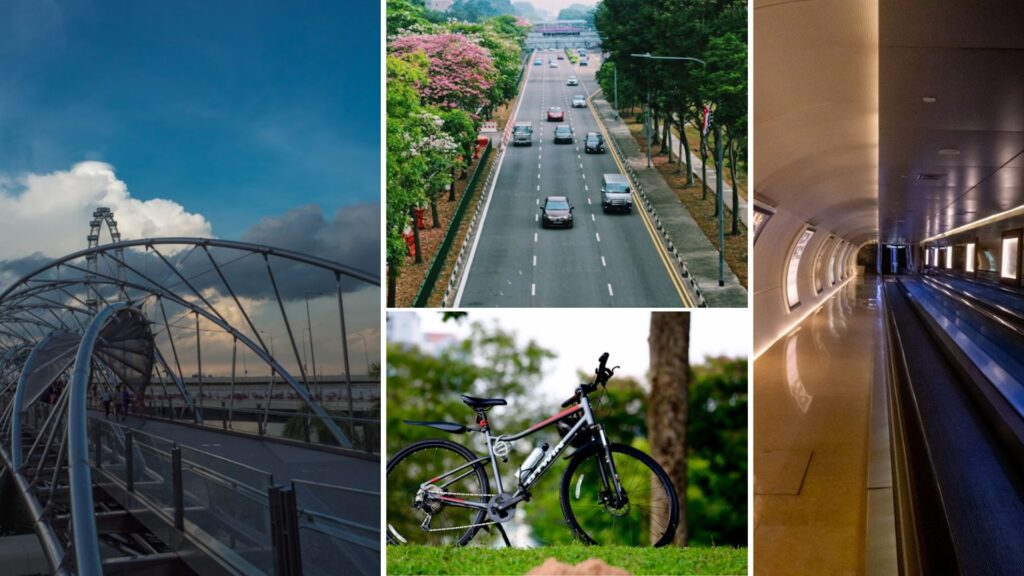
What Is the cost of healthcare services in Singapore?
Singapore’s healthcare system is ranked among the best worldwide: it’s efficient, modern, and extremely high quality. However, it isn’t free or universal for foreigners. Both public and private hospitals have high standards, though costs can be steep without insurance.
As an expat, digital nomad, or international student, you’ll usually rely on private clinics or pay international rates at public hospitals. That’s why having private health insurance is almost essential if you’ll live in Singapore for more than a few weeks.
Can foreigners access the public system?
Yes, but without subsidies. Public hospitals like Singapore General Hospital or Tan Tock Seng Hospital accept foreign patients, though they charge full rates (higher than for citizens or permanent residents). Generally, an outpatient consultation for foreigners costs $80–120 (€74–110), while surgeries can exceed $10,000 (€9,200), depending on complexity.
Private health insurance: a real need
Because of these costs, most foreigners in Singapore take out international health insurance. Providers like Cigna, AXA, AIA, Bupa, and Allianz offer plans covering consultations, hospitalisation, emergencies, and even medical evacuation. Prices depend on coverage, age, and pre-existing conditions.
| Insurance type | Monthly price (USD) | Price (€) |
|---|---|---|
| Basic (consultations + emergencies) | $90–130 | €83–120 |
| Comprehensive (hospitalisation, surgery, maternity) | $160–250 | €147–230 |
Cost of healthcare insurance in Singapore
There are also policies for students and digital nomads, covering private clinics with no copay. Either way, having insurance in Singapore will make life far easier. If you’re moving here, don’t hesitate to get one.
How much do internet and phone plans cost in Singapore?
In a hyper-connected city like Singapore, having reliable internet is essential. Fortunately, the country has one of the most advanced digital infrastructures worldwide, with nationwide fibre coverage and speeds over 1 Gbps in urban areas.
Mobile plans also provide stable 5G, wide coverage (even underground), and competitive prices, especially through prepaid deals or online promotions. Combined packages (SIM + WiFi) are also available for expats and students.
Home broadband
Major providers in Singapore include StarHub, Singtel, M1, and ViewQwest. They all offer fibre broadband with free installation and a router under 12- or 24-month contracts.
| Plan | Speed | Monthly price (USD) | Price (€) |
|---|---|---|---|
| StarHub 1 Gbps | 1,000 Mbps | $33.00 | €30.36 |
| Singtel 1 Gbps + TV | 1,000 Mbps + TV | $40.00 | €36.80 |
| ViewQwest Gamer 1 Gbps | 1,000 Mbps | $45.00 | €41.40 |
Average cost of home broadband in Singapore
If you stay in a coliving or Airbnb, WiFi is usually already included in rent.
Mobile plans: Data, calls, prepaid
In Singapore, you can get postpaid plans with local ID, or buy prepaid SIM cards with unlimited data. Prices for tourists and temporary residents are fair, especially with digital providers like Giga, MyRepublic, or Zero1.
| Plan | Includes | Monthly price (USD) | Price (€) |
|---|---|---|---|
| Giga! 80 GB | 80 GB + 100 min + 100 SMS | $18.00 | €16.56 |
| Zero1 60 GB | 60 GB + unlimited local calls | $22.00 | €20.24 |
| M1 Prepaid SIM 100 GB (30 days) | 100 GB + 1.000 min + 1.000 SMS | $25.00 | €23.00 |
All plans let you tether from your phone, very handy if you’ll work on the move.
Still, if you want instant internet upon arrival and travel across Southeast Asia, Holafly’s monthly plans are your best choice. For just $67.90 SGD (€64.90), you’ll get unlimited data through a global eSIM working in over 170 countries, including Singapore, with no roaming fees.
Important: If you are a frequent traveler and want to stay connected without worrying about expensive roaming or looking for a new SIM at every destination, Holafly’s subscription plans are for you. With a single eSIM, enjoy internet in more than 160 countries for a fixed price and no surprises on your bill. Travel without limits and connect easily and securely! 🚀🌍

How does leisure affect the cost of living?
Although Singapore is pricey for housing and cars, leisure and cultural activities offer plenty of affordable options. You can spend free time in free museums, stunning parks, cinemas, theatres, concerts, and enjoy world-class dining. The variety suits different budgets.
Government also supports culture with public events, festivals, and venues like the Esplanade or Singapore Botanic Gardens, often free or symbolic in cost.
Did you know cinema and theatre are popular in Singapore? Cinemas feature cutting-edge technology, usually inside malls like Plaza Singapura, VivoCity, or Bugis+. Theatres such as The Esplanade or Victoria Theatre host local and international shows.
Here’s an overview of costs. Note that there are also indie cinemas and free screenings at universities or community centres.
| Activity | Price (USD) | Price (€) |
|---|---|---|
| Cinema ticket (2D) | $10.00–14.00 | €9.20–12.88 |
| Theatre ticket | $25.00–60.00 | €23.00–55.20 |
| International concert | $70.00–120.00 | €64.40–110.40 |
Average leisure activity costs in Singapore
Streaming and home entertainment
Many residents prefer entertainment at home. Platforms like Netflix, Disney+, and Amazon Prime Video are available at similar prices to other countries, though catalogues may vary. A good way to save is account sharing or grabbing promotions.
| Service | Monthly price (USD) | Price (€ ≈) |
|---|---|---|
| Netflix Standard | $11.00 | €10.12 |
| Disney+ | $8.00 | €7.36 |
| Amazon Prime Video | $6.00 | €5.52 |
| Spotify Premium | $10.00 | €9.20 |
Cost of popular streaming platforms
Cost of living in Singapore: Tourist spots and must-dos
Singapore is full of attractions mixing nature, futuristic architecture, and Asian culture. Many are free or available with passes. The city also offers numerous green spaces for walking, exercise, or picnics. Must-sees include:
| Touristic attraction | Price (USD) | Price (€) |
|---|---|---|
| Marina Bay Sands SkyPark | $20.00 | €18.40 |
| Gardens by the Bay (domes) | $28.00 | €25.76 |
| Singapore Flyer (wheel) | $33.00 | €30.36 |
| Singapore Zoo (general entry) | $37.00 | €34.04 |
| National Museum of Singapore | $10.00 | €9.20 |
| Singapore Botanic Gardens | Free | Free |
| Sentosa Island (beaches & walks) | Free–$10.00 | €0–9.20 |
Cost of top tourist attractions in Singapore
Many museums and cultural centres also offer free entry on certain Fridays or specific days monthly. Make the most of these! As you see, even though Singapore is economically advanced, leisure doesn’t need to be expensive. With good planning and by taking advantage of free offers, you can enjoy unique experiences without emptying your wallet.
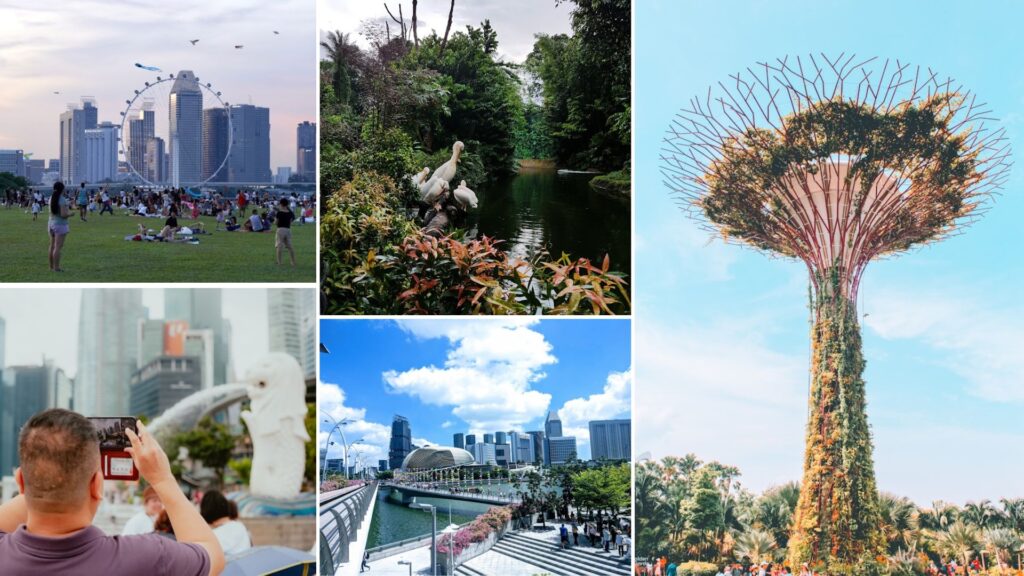
Is Singapore’s cost of living high?
Living in Singapore means choosing a city where everything works. Public transport runs on time, digital connectivity is excellent, safety is guaranteed, and job opportunities are abundant, especially in tech, finance, biotech, and education. Its strategic Asian location also makes it an ideal base for regional travel.
That said: Singapore’s cost of living is high. Housing and healthcare can weigh heavily on your budget if not planned. Still, access to world-class services, clean public spaces, and a vibrant urban life balances things out.
Whether you come to study, work, or simply explore, Singapore welcomes you with a cosmopolitan, efficient, and culturally rich experience, in one of the most advanced cities worldwide.
Frequently asked questions about the cost of living in Singapore
A reasonable budget for someone renting coliving, cooking at home, and using public transport is around $2,500 per month (€2,300). With a more comfortable lifestyle, monthly expenses can exceed $3,000.
Language can often feel like a barrier when moving abroad. In Singapore, English is one of the official languages and used in most procedures, signage, universities, and workplaces. Good command helps you adapt faster, though you can arrive with a basic level and improve. Mandarin isn’t essential.
It depends on your profile. HDB flats are cheaper but harder to access for temporary foreigners. Coliving offers community and all-inclusive services but less privacy since spaces like kitchens are shared. Condos provide privacy but at a higher price.
Yes. Students with visas can access discounted transport passes, cultural entry tickets, mobile phone plans, and even special health insurance.
Absolutely. Singapore has one of the lowest crime rates worldwide. You can walk almost anywhere at any hour. However, always respect local laws, which are strict.





 Language
Language 


















 No results found
No results found





